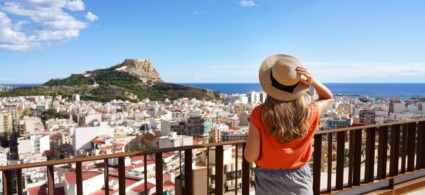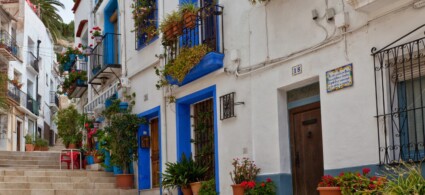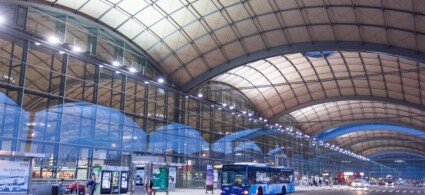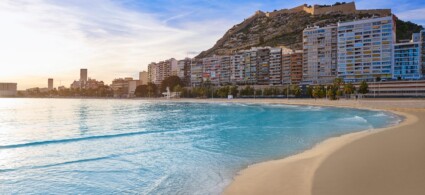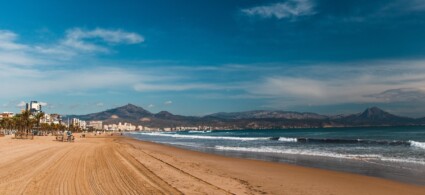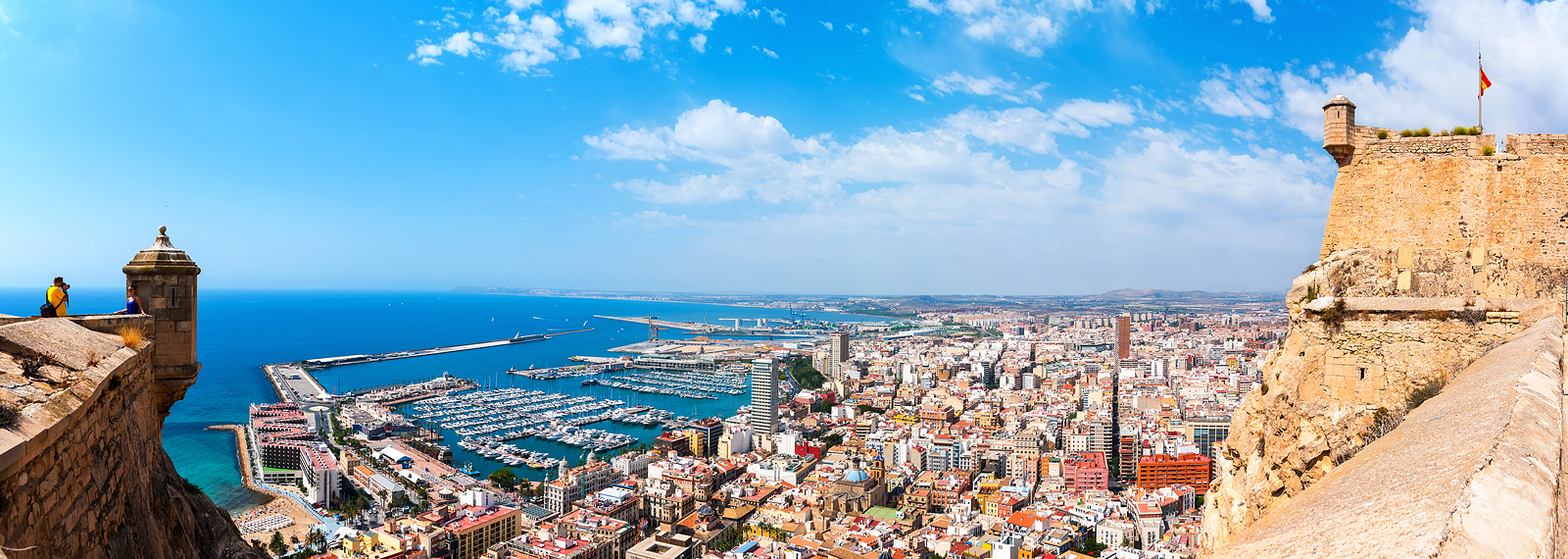

Located along the Costa Blanca, Spain’s legendary coastal area known for sea and fun, Alicante is much more than just a seaside resort.
Certainly, Alicante is famous for its long beaches of fine sand and transparent waters, such as Playa del Postiguet, an urban beach of rare beauty.
Equipped with numerous services, playgrounds and sports facilities, the Alicante region’s beaches are teeming with people of all ages looking to relax or have fun, but if you want peace and quiet you need only move a little further to find a semi-deserted cove.
The true symbol of Alicante, however, is the Santa Barbara Castle, a fortress that dominates the city from a promontory above the sea: climb up here for a breathtaking view of the city.
Stroll through the pretty city centre in search of churches and historic buildings or along Esplanada de España, Alicante’s ‘rambla’ lined with mosaic tiles, for some cool shade from the palm trees. This popular meeting place is also great for an evening drink or simply for people-watching.
The surrounding towns and villages, from bustling Benidorm to small old villages also offer many scenic and cultural attractions: set aside some time of your holiday to explore the Alicante region.
Don’t forget that you are in Spain! To experience a 100% Spanish holiday, you cannot fail to indulge in the pleasures of the cuisine, perhaps going from tapas bar to tapas bar or treating yourself to a paella dinner on the seafront. Taste the local wines or quench your thirst with a cool glass of sangria .
When the sun goes down, it is still early: the movida starts around eleven to midnight, but you can continue to party until morning. And if discos and noise aren’t your thing, catch a thrilling flamenco show for an unforgettable evening.
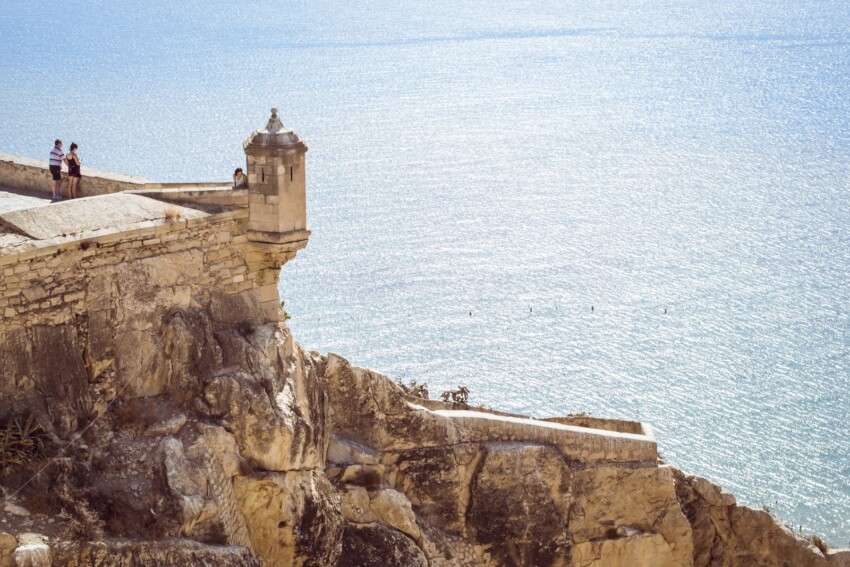
Alicante is a city by the sea, so it comes naturally to visit in summer. During this season the city beach, Playa del Postiguet, is full of people, the atmosphere is pleasant and lively, and even the streets of the old town are always crowded day and night. Of course, this is the high season from a tourist point of view, so you will find higher prices for hotels. If your holiday calendar allows, give Alicante a chance to be visited in spring or autumn: the days are always long, the weather always pleasant and you will have less crowding and lower prices.
Finally, for an escape from the cold, consider visiting Alicante in winter. Of course you will not be able to bathe, but on a sunny day with no wind it will be pleasant to spend a few hours on the beach. Also, the city – like most of Spain – dresses up for Christmas, with lots of decorations everywhere and a very pleasant atmosphere.
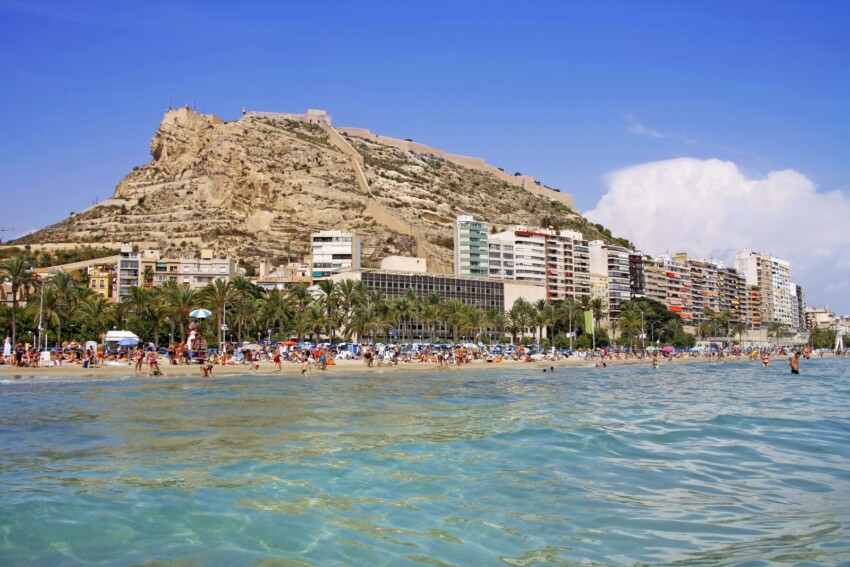
Alicante’s city beach proper is Playa del Postiguet, located practically in the city centre, at the base of the hill on which the Castillo de Santa Barbara stands. It is about 600 metres long, with soft sand and a gently sloping seabed. It is mostly free, although there are a few bathing establishments where sunbeds and umbrellas can be hired. Behind the beach there are some palm trees (few, actually), where with a bit of luck you can find some shade.
The ‘other’ beaches of Alicante are located slightly outside the centre, although still within the urban context. They are Playa de la Albufereta, about 300 metres long and well served by the La Isleta tram stop, the nearby Playa de la Almadraba, and the very long beach on the east side of the city, which, depending on your location, is called Playa de las Huertas, Playa de San Juan and Playa de Muchavista, although the latter is administratively part of the municipality of El Campello.
All of Alicante’s beaches have common characteristics, including soft, golden sand, a transparent sea and a gently sloping seabed. They are almost all free, but there are also equipped areas.
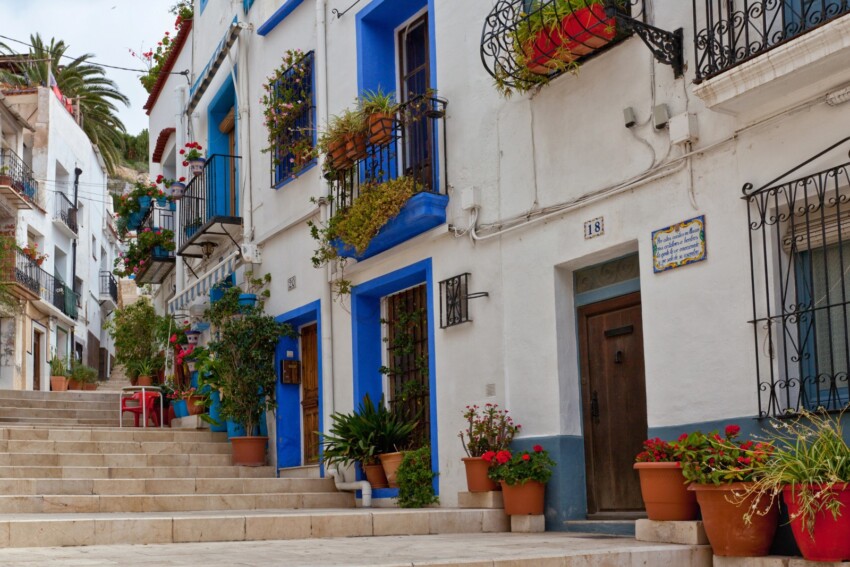
Although Alicante is a seaside city, there are so many things to see that you may even forget about the beach for a few days! Start your visit, of course, at the Castillo de Santa Barbara, perched on the top of a hill, Mount Benacantil, which from its almost 200 metres of altitude offers a unique panorama of the city and the Costa Blanca. The castle dates back to the ninth century, although it was later redesigned, conquered, rebuilt, bombed, used as a prison, a concentration camp and finally abandoned, until it was opened to the public for visits in 1963.
Before returning to sea level, descend Mount Benacantil on the southwest side, where you will find a neighbourhood with the typical small white houses that in the collective imagination make so much of Spain. This is the Barrio de Santa Cruz, the old city centre, also called Barri Vell. Today, the area is also known for its nightlife, made up of cocktail bars and tapas bars, in a maze of cobbled streets to be discovered. Here you can also see a section of the old medieval walls, and visit two very important museums, which are the Museo de Bellas Artes Gravina, dedicated to fine arts, and the MACA, dedicated to contemporary art.
It is now time to visit the ‘new’ area of Alicante, which starts at the marina, where you will find the Placa de la Porta de la Mar and the beautiful seafront promenade, the Passeig de l’Esplanada d’Espanya, more simply Esplanada de España . Don’t miss the central market, the Plaça de Bous d’Alacant dedicated to bullfighting, Alicante’s basilica dedicated to Santa Maria and, more generally, the streets and squares that open out from the Rambla de Méndez Núñez, which is the beating heart of the city, full of shops, restaurants and services of all kinds. North of the historical centre, on a second hill, is a second abandoned castle: it is the Castell de Sant Ferran, or San Fernando Castle, also worth a visit.
Discover Alicante through the eyes of expert guides who will take you on a tour of the city's hidden treasures. Participating in a guided visit or a free tour will allow you to capture the true essence of Alicante.
The free tours are a viable alternative to traditional guided tours. They work like this: participation is free and at the end of the visit you can leave a tip at your discretion. Below you will find our favourite free tour, otherwise you can see the full list by visiting this page.
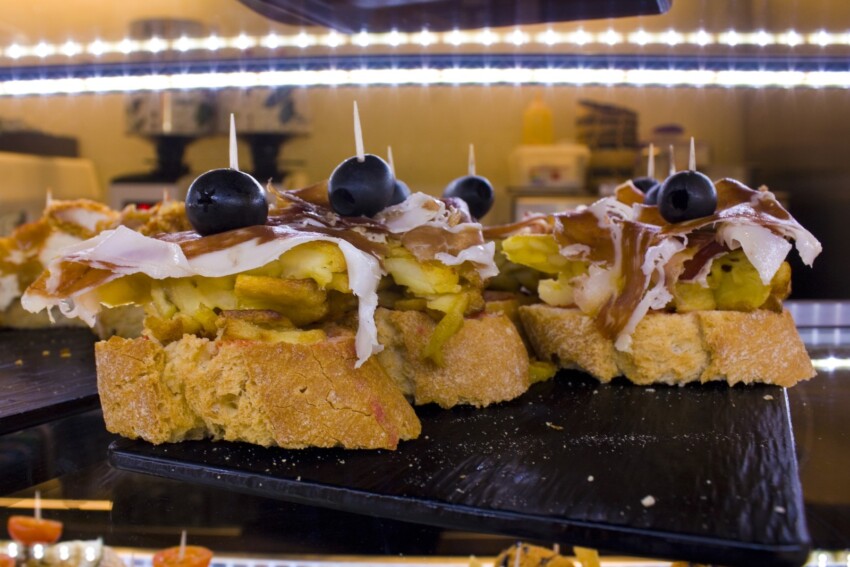
Traditional Alicante cuisine revolves around the Mediterranean Sea, so you will always be able to enjoy delicious fish dishes. A speciality of the region is rice, and here is the perfect formula: rice + fish = paella! In fact, the signature dish of Spanish gastronomy comes from Valencia, less than an hour’s drive from Alicante. The city has its own version of it, the paella alicantina, in which rice is cooked in a sauce called salmorreta, made with tomato, garlic, parsley and peppers.
A lesser-known variation of paella is Arroz a banda, where the fish (at least in theory) should be served separately from the rice, while a dish still made with rice but this time with meat is Arroz a la costra, with chicken or rabbit, cured meats and scrambled eggs, all served in an earthenware crock to be placed in the oven.
During the winter, especially during the Christmas festivities, in Alicante you will find Turròn, or nougat, everywhere, in its variants from Alicante or from Jijona, a town located a few kilometres away. Turròn de Jijona is soft while Turròn de Alicante is hard; their importance is such that both have been awarded the Spanish equivalent of the PGI, the Protected Geographical Indication.
There are many places to stay in Alicante. Much depends on the type of holiday you want to take, and consequently the time of year you plan your visit to the city. As a general rule we recommend sleeping between the sea and the centre, in an area convenient to public transport but at the same time with all the tourist attractions close at hand.
However, if you have a rental car, it may be complicated and inconvenient to find parking, so in this case we recommend that you move away at least a little, concentrating your search in a more peripheral area but where parking is not a problem. The historical centre – the Barri Vell – is indeed picturesque but beware if you are travelling with heavy suitcases in tow, pushchairs or people with mobility difficulties, as the streets are narrow, pedestrianised, cobbled, with steps and uphill: the perfect mix of uncomfortable.
Finally, do not underestimate the San Juan area, with its beautiful beach and its many hotels and flats with swimming pools. It may not be the most architecturally beautiful area, but it is still full of amenities, a stone’s throw from the sea, and convenient to public transport.
We offer a selection of hotels at Alicante to suit all categories of travellers. The most booked by tourists are the sea-facing hotels, often right on the beach. If you want to play it safe, choose one of the following: they are among the most booked hotels in Alicante, sorted by number of reviews.
If you prefer space, privacy and the ability to prepare your own meals to a hotel holiday, book a holiday home at Alicante. We recommend a few below, but in this case we advise you to book early because houses and apartments for rent at Alicante are in high demand.
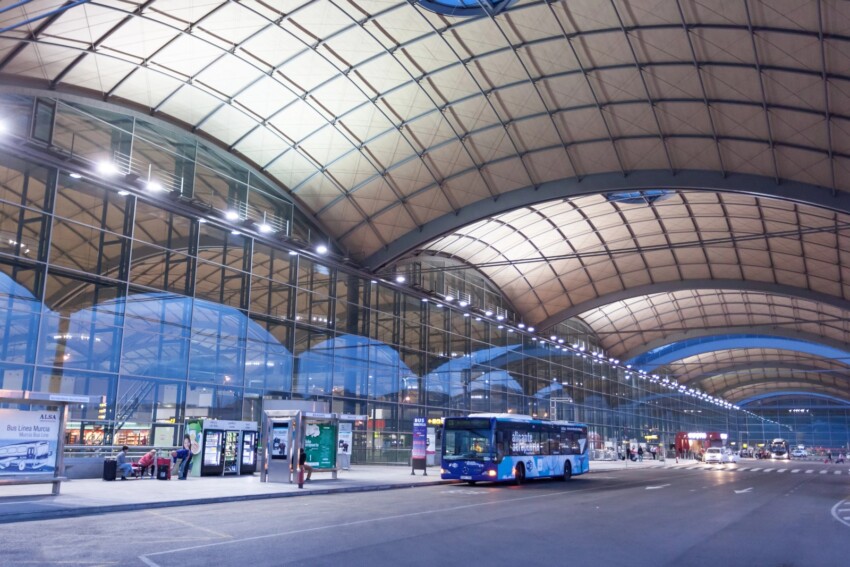
Alicante has an international airport that is well served by low-cost airlines, with flights departing from all over Europe throughout the year. You will therefore have no difficulty finding a flight to Alicante, even at great prices if booked in advance. Alicante airport is located in Elche, a municipality about 15 kilometres to the west.
If for some reason you can’t find a good flight combination, consider landing at Valencia Airport and arriving in Alicante by public transport or a rental car. The journey by car takes less than two hours, taking either the road that runs along the coast or the one that passes inland.
Finally, if you are already in Spain and would like to get to Alicante, in addition to a rental car you can consider the train. Since 2013 the station in Alicante, called Alicante Terminal, has been welcoming Spanish high-speed AVE trains to and from Madrid, Valencia or Murcia, as well as many regional and intercity trains to several other cities.
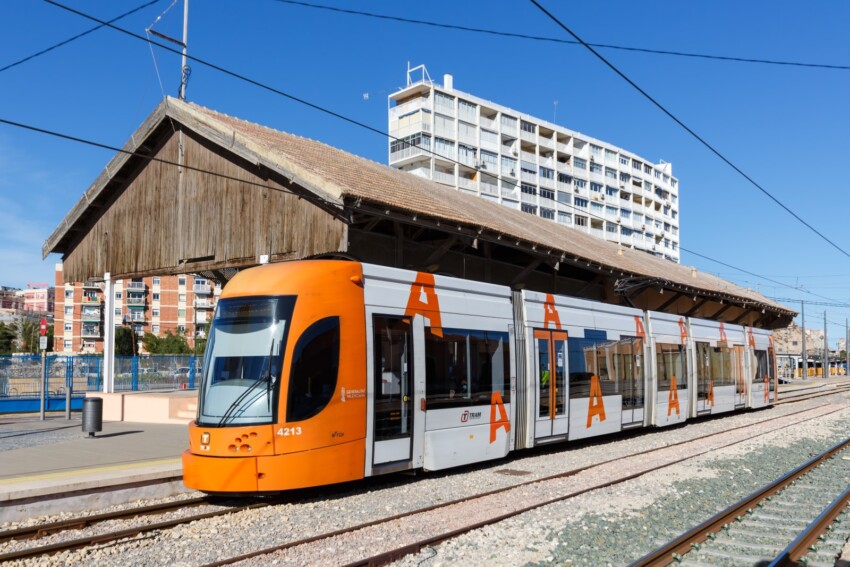
The preferred public transport for tourists visiting Alicante is the tram, consisting of five lines numbered L1 to L5. They are almost all city lines, or at most extending to neighbouring municipalities, except for L1, which goes as far as Benidorm. The trams start moving between 5 and 6 a.m. and finish running late in the evening. Alongside the trams, Alicante’s transport system also includes numerous buses.
Alicante is located along the west coast of the Iberian Peninsula, in the stretch known as the Costa Blanca. It is located between Valencia, 160 km away, and Murcia, 80 km away. Benidorm is only 45 km away.
